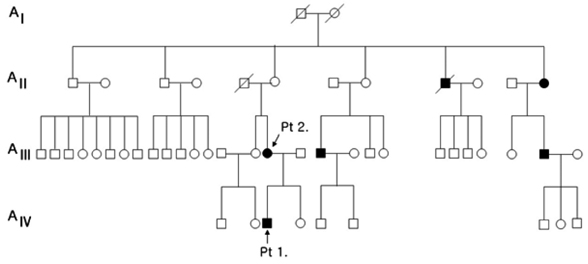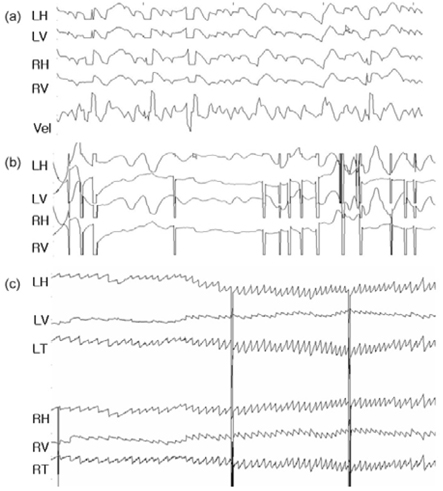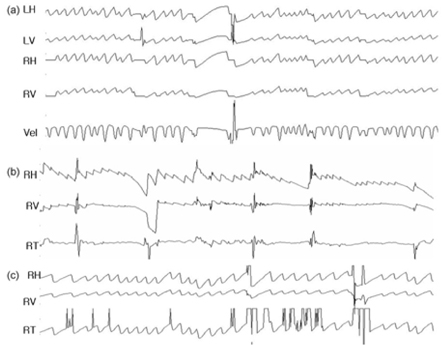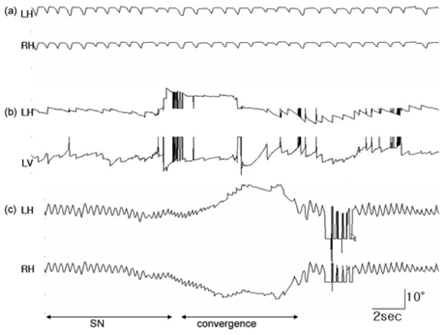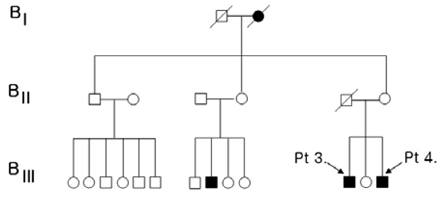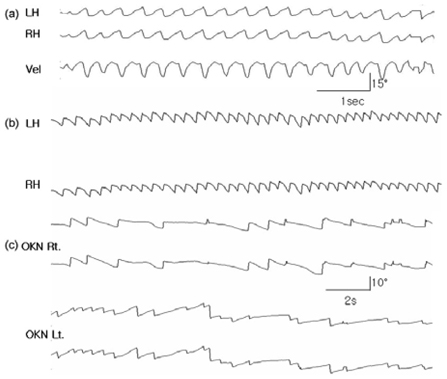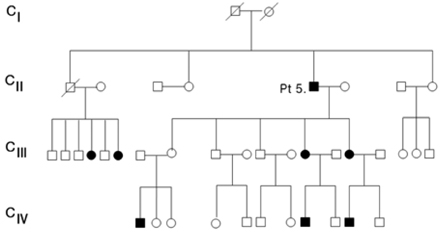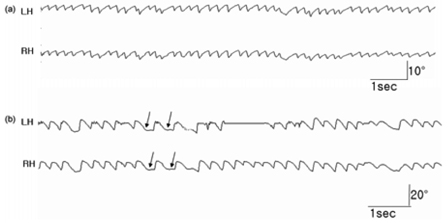J Clin Neurol.
2007 Sep;3(3):139-146. 10.3988/jcn.2007.3.3.139.
Clinical and Oculographic Findings of X-linked Congenital Nystagmus in Three Korean Families
- Affiliations
-
- 1Department of Neurology, Seoul National University College of Medicine, Korea. jisookim@snu.ac.kr
- 2Department of Neurology, Chonbuk National University College of Medicine, Korea.
- 3Department of Neurology, Korea University College of Medicine, Korea.
- 4Department of Ophthalmology, Seoul National University College of Medicine, Korea.
- KMID: 2135492
- DOI: http://doi.org/10.3988/jcn.2007.3.3.139
Abstract
- BACKGROUND AND PURPOSE
Congenital nystagmus (CN) is an ocular oscillation that usually manifests during early infancy. Typical features of CN include bilateral, conjugate, uniplanar, and usually horizontal eye movements, a null position, increased oscillation during fixation, and decreased amplitude during convergence. Our purposes were description and analysis of clinical and oculomotor findings of patients with X-linked familial CN.
METHODS
We describe the clinical and oculographic features of five patients from three families with X-linked CN. Three-dimensional video-oculography disclosed various patterns of CN and variable degrees of gaze-holding deficits and visual impairments.
RESULTS
The features of CN varied even in patients from the same family. Head tilt, strabismus, reversal of optokinetic nystagmus, and impairments of the vestibulo-ocular reflex, smooth pursuits, and saccades were frequent findings.
CONCLUSIONS
The intra- and interfamilial diversities imply that heredity plays a secondary role in determining the clinical phenotypes and waveforms of CN.
Keyword
MeSH Terms
Figure
Reference
-
1. Leigh RJ, Zee DS. Diagnosis of central disorders of ocular motility. The neurology of eye movements. 4th edn. New York: Oxford University Press.2. Hoffmann S, Becker A, Hoerle S, Metz A, Oertel WH, Sommer N, et al. Autosomal dominant congenital nystagmus is not linked to 6p12, 7p11, and 15q11 in a German family. Am J Ophthalmol. 2004. 138:439–443.
Article3. Gelbart SS, Hoyt CS. Congenital nystagmus: a clinical perspective in infancy. Graefes Arch Clin Exp Ophthalmol. 1988. 226:178–180.
Article4. Leitch RJ, Thompson D, Harris CM, Chong K, Russell-Eggitt I, Kriss A. Achiasmia in a case of midline craniofacial cleft with seesaw nystagmus. Br J Ophthalmol. 1996. 80:1023–1024.
Article5. Migeon BR, Kennedy JF. Evidence for the inactivation of an X chromosome early in the development of the human female. Am J Hum Genet. 1975. 27:233–239.
Article6. Schneiderman LJ, Bartnof HS, Worthen DM. X-linked congenital nystagmus: a problem in genetic counseling. Ann Ophthalmol. 1976. 8:444–446.7. Kerrison JB, Koenekoop RK, Arnould VJ, Zee D, Maumenee IH. Clinical features of autosomal dominant congenital nystagmus linked to chromosome 6p12. Am J Ophthalmol. 1998. 125:64–70.
Article8. Rosenblum SF, Rosenblum JA. Sex linked hereditary nystagmus. Metab Pediatr Syst Ophthalmol. 1987. 10:103–106.9. Kerrison JB, Vagefi MR, Barmada MM, Maumenee IH. Congenital motor nystagmus linked to Xq26-q27. Am J Hum Genet. 1999. 64:600–607.
Article10. Forssman B. Hereditary studies of congenital nystagmus in a Swedish population. Ann Hum Genet. 1971. 35:119–138.
Article11. Kim JS, Ahn KW, Moon SY, Choi KD, Park SH, Koo JW. Isolated perverted head-shaking nystagmus in focal cerebellar infarction. Neurology. 2005. 64:575–576.
Article12. Han BI, Oh HJ, Kim JS. Nystagmus while recumbent in horizontal canal benign paroxysmal positional vertigo. Neurology. 2006. 66:706–710.
Article13. Abadi RV, Dickinson CM. Waveform characteristics in congenital nystagmus. Doc Ophthalmol. 1986. 64:153–167.
Article14. Jung R, Kornhuber HH. Results of electronystagmography in man: the value of optokinetic, vestibular, and spontaneous nystagmus for neurologic diagnosis and research. The oculomotor system. 1964. New York: Harper and Row;428–488. chap 19.15. Dell'Osso LF, Weissman BM, Leigh RJ, Abel LA, Sheth NV. Hereditary congenital nystagmus and gaze-holding failure: the role of the neural integrator. Neurology. 1993. 43:1741–1749.16. Bedell HE, Bollenbacher MA. Perception of motion smear in normal observers and in persons with congenital nystagmus. Invest Ophthalmol Vis Sci. 1996. 37:188–195.17. Cogan DG. Congenital nystagmus. Can J Ophthalmol. 1967. 2:4–10.

